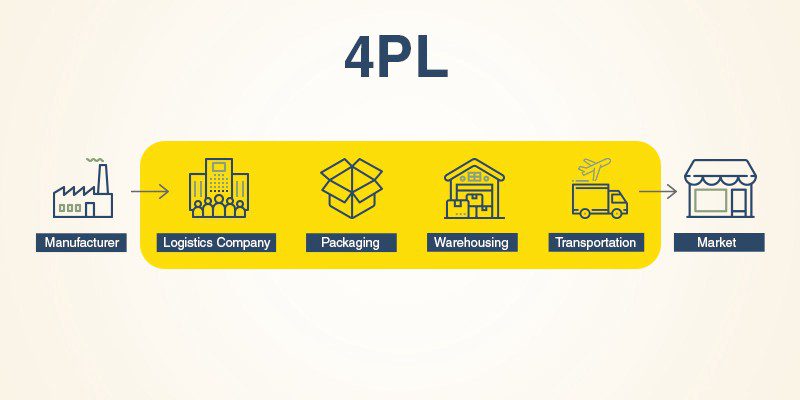Uncover the key factors contributing to supply chain inefficiencies and learn how to address them effectively.
Identifying Common Supply Chain Inefficiencies
Supply chain inefficiencies can arise from various factors, and it is crucial for logistics businesses to identify them in order to address them effectively. One common inefficiency is poor inventory management, where businesses struggle to accurately track and manage their inventory levels. This can lead to stockouts, excess inventory, and increased costs. Another common inefficiency is a lack of visibility in the supply chain, where businesses have limited insight into the status and location of their goods. This can result in delays, disruptions, and customer dissatisfaction.
In addition, inefficient transportation and logistics processes can also contribute to supply chain inefficiencies. This may include inefficient route planning, lack of coordination between different transportation modes, and poor warehouse layout and organization. These inefficiencies can lead to delays in delivery, increased transportation costs, and operational bottlenecks.
Furthermore, ineffective demand forecasting and planning can also cause supply chain inefficiencies. When businesses fail to accurately forecast customer demand, they may either overstock or understock their inventory, resulting in waste or lost sales. Additionally, poor communication and collaboration between different stakeholders in the supply chain can lead to delays, errors, and misunderstandings.
By identifying these common supply chain inefficiencies, logistics businesses can take proactive steps to address them and improve overall supply chain performance.
The Impact of Poor Communication in Supply Chains
Effective communication is crucial for the smooth functioning of supply chains. However, poor communication can have a significant impact on supply chain efficiency. One of the key impacts of poor communication is increased lead times. When there is a lack of clear and timely communication between different stakeholders, it can lead to delays in decision-making, order processing, and coordination, ultimately resulting in longer lead times.
Poor communication can also lead to errors and misunderstandings. Inaccurate or incomplete information can be shared, leading to incorrect orders, incorrect inventory levels, and incorrect delivery instructions. These errors can result in costly rework, stockouts, and customer dissatisfaction.
Furthermore, poor communication can hinder collaboration and coordination between different parties involved in the supply chain. Without effective communication channels and processes, it becomes challenging to align goals, share information, and resolve issues efficiently. This can lead to inefficiencies, bottlenecks, and increased costs.
To mitigate the impact of poor communication, logistics businesses should invest in communication technologies and platforms that facilitate real-time communication, information sharing, and collaboration. Additionally, establishing clear communication protocols and channels, and fostering a culture of effective communication can help improve supply chain efficiency.
Utilizing Technology to Improve Supply Chain Efficiency
In today's digital age, technology plays a crucial role in improving supply chain efficiency. Logistics businesses can leverage various technologies to streamline their operations and enhance overall performance.
One technology that can significantly improve supply chain efficiency is automation. Automating repetitive and time-consuming tasks, such as order processing, inventory management, and data entry, can help reduce errors, increase productivity, and free up resources for more value-added activities. Additionally, automation can enable real-time tracking and monitoring of goods, providing businesses with better visibility and control over their supply chain.
Another technology that can improve supply chain efficiency is data analytics. By collecting and analyzing data from various sources, such as customer demand, inventory levels, and transportation routes, businesses can gain valuable insights and make data-driven decisions. This can help optimize inventory levels, improve demand forecasting accuracy, and identify areas for process improvement.
Furthermore, cloud computing can also contribute to improved supply chain efficiency. Cloud-based platforms provide businesses with the flexibility and scalability to store and access data, collaborate with partners, and integrate various systems and applications. This can streamline information flow, enhance collaboration, and enable real-time decision-making.
By utilizing these technologies, logistics businesses can drive efficiency gains, reduce costs, and deliver better service to their customers.
Implementing Sustainable Practices in Supply Chain Management
Sustainability has become an increasingly important consideration for logistics businesses. Implementing sustainable practices in supply chain management not only helps protect the environment but also contributes to improved efficiency and cost savings.
One sustainable practice that can enhance supply chain efficiency is optimizing transportation routes. By analyzing transportation data, businesses can identify the most efficient routes that minimize fuel consumption, reduce emissions, and lower transportation costs. This can result in shorter lead times, improved on-time delivery performance, and reduced environmental impact.
Another sustainable practice is adopting green packaging solutions. Using eco-friendly packaging materials, such as biodegradable or recyclable materials, can help reduce waste and minimize the environmental footprint of logistics operations. Additionally, optimizing packaging design and dimensions can enable better space utilization, leading to more efficient transportation and reduced packaging material usage.
Furthermore, logistics businesses can explore alternative energy sources and technologies to power their operations. This can include investing in electric vehicles, solar power systems, and energy-efficient warehouse equipment. By reducing reliance on fossil fuels and utilizing renewable energy sources, businesses can lower their carbon emissions and contribute to a cleaner and greener supply chain.
By implementing these sustainable practices, logistics businesses can not only improve their environmental performance but also achieve cost savings and enhance overall supply chain efficiency.
Strategies for Streamlining Logistics Operations
Streamlining logistics operations is essential for improving supply chain efficiency. By adopting effective strategies, logistics businesses can optimize their processes, reduce costs, and enhance customer satisfaction.
One strategy for streamlining logistics operations is improving warehouse management. This can involve implementing efficient layout designs, utilizing technology for inventory tracking and picking, and optimizing storage space utilization. By improving warehouse operations, businesses can reduce order processing times, minimize errors, and improve inventory accuracy.
Another strategy is optimizing transportation and distribution processes. This can include implementing route optimization software, consolidating shipments to maximize load capacity, and establishing effective transportation contracts with carriers. By reducing transportation costs, minimizing delivery lead times, and improving delivery accuracy, businesses can enhance supply chain efficiency.
Additionally, implementing lean principles can also contribute to streamlined logistics operations. Lean principles focus on eliminating waste, improving process flow, and enhancing operational efficiency. By identifying and eliminating non-value-added activities, optimizing process steps, and fostering a culture of continuous improvement, businesses can achieve significant efficiency gains.
Furthermore, effective demand planning and forecasting can help streamline logistics operations. By accurately forecasting customer demand, businesses can ensure optimal inventory levels, reduce stockouts, and minimize excess inventory. This can result in improved order fulfillment rates, reduced inventory holding costs, and enhanced customer satisfaction.
By implementing these strategies, logistics businesses can streamline their operations, reduce costs, and improve overall supply chain efficiency.




SHARE